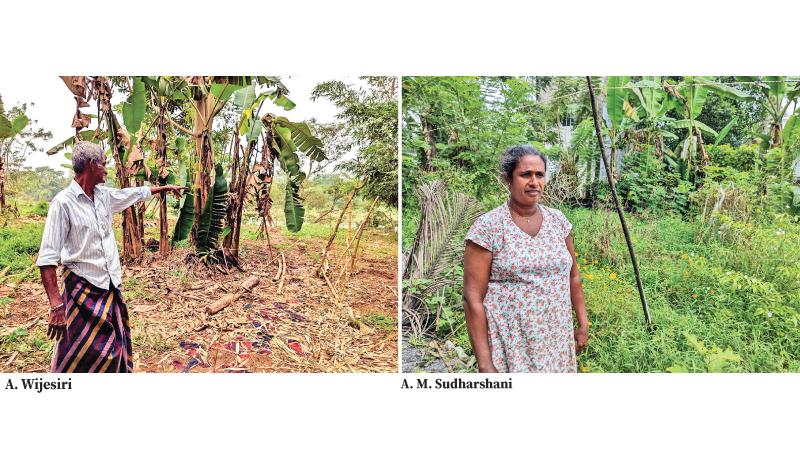
Sri Lanka is grappling with its worst economic crisis in over seven decades since the country gained independence from the British. The high cost of transportation and a temporary ban on chemical fertiliser forced the cost of locally produced vegetables to increase at least two-fold recently. The Government even urged families to start growing food crops in their gardens to tackle the cost of living.
However, several months ago, heavy rainfall caused the Kelani River to overflow for the third time in three weeks destroying vegetable plots and affecting the lives and livelihoods of a multitude of Kelani valley dwellers.
A.M. Sudharshani, 46, is in her home garden trying to save what is left of her vegetable plot after floods swept away much of what was in the garden. She relied on her small garden to feed her two children and husband, and when she had excess yield, she even shared the produce with her neighbours.
“Look here, these were my brinjal plants. They were about to flower when the floods came,” she said pointing to what is left of her garden.
She used to grow chillies, ladies’ fingers, beans, and tomatoes too. But none of that is remaining now. All that is left are the manioc plants.
“It flooded three times in three months. That was just too much for the plants and they died. I feel sad when I see them now. Sometimes, I don’t even come this way because I worked hard to grow these plants,” Sudharshani said.
Saving grace
Like Sudharshani, many families in her village, Bomiriya, alongside the Kelani River, started to grow their own vegetables and greens during the Covid-19 lockdowns. Home gardens were a saving grace for families struggling with the skyrocketing cost of living in the country before recent floods.
A few metres away, closer to the river lives A. Wijesiri, 65, who remembers playing in the floods and rowing boats ‘for fun’ when it flooded when he was a schoolboy because flooding was a rare occurrence.
“The floods that came in the 1980s were the biggest I can remember. It was a new experience for us, boys. So, we had fun in the water and ate the food people from other areas came to donate,” Wijesiri said.
This has changed now for the villagers in Bomiriya. Since floods are more frequent than it was when Wijesiri was a boy, they have started to adapt to the best way they know, by building their houses on raised foundation or building a second story to sleep in till the water subsides.
“I can’t remember it raining this heavily decades ago. Now there is heavy and frequent rainfall. And if it rains for a day, all these houses get flooded,” Wijesiri said.
Climate resilience
In September last year, the Government and the World Bank signed a USD 92 million financing agreement to initiate a climate resilience improvement project in a bid to reduce the vulnerability of exposed families along the Kelani River. According to the Chairman of the National Experts Committee on Climate Change Adaptation (NECCCA) of the Ministry of Mahaweli Development and Environment and former Chief Climatologist of the Department of Agriculture, Dr. B. V. R. Punyawardena, flooding in the Kelani River basin is not an unusual phenomenon.
According to government data, floods in 1947, 1989, and 2016 were the most destructive ones in the area. However, now families are affected by floods more frequently in a shorter period.
Dr. Punyawardena said that Climate Change is directly affecting rain patterns in Sri Lanka resulting in extreme flooding or drought.
“When I teach my students, I tell them Climate Change is breaking records each year like Usain Bolt breaking his records,” Dr. Pungyawardena said explaining that every year is becoming worse.
Mitigation
“Most communities affected by climate change (like the families in Bomiriya) are not affluent and do not know that the floods and drought are caused by Climate Change. The only adaption or mitigation they do is to build a two-story house or collect food items to last a few days till the flood water recedes.”
He said that in most areas, human interventions are also to be blamed for extreme flooding. “People have filled wetlands that are there to absorb water, so there are no drains. So, what we are experiencing now is Climate Change resulting in severe rainfall, and man-filled wetlands increasing the severity of floods,” he said.
According to Dr, Pungyawardena, Climate Change in Sri Lanka is causing malnutrition among affected communities as they can’t grow their food as people used to do several decades ago.
For villagers such as Sudharshani, it rings true. “Everything is expensive now. We can’t have a decent meal because we can’t afford it anymore. My garden could have fed my family well during this time, but now that is gone too,” she said.
